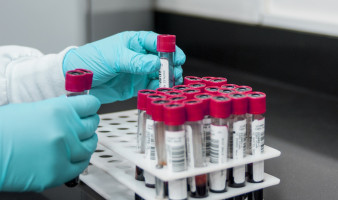
For a little over two decades, chimaeric antigen receptor (CAR) T cell therapy has emerged as a powerful new way to treat cancer.
By extracting patients’ T cells, re-engineering them to recognise tumour antigens, and infusing them back into the body, physicians have achieved effective treatments for leukaemia and lymphoma cancers.
“This approach has achieved remarkable success against blood cancers, but the same cannot be said for solid tumours, which account for over 90% of all cancers,” says Dan Dongeun Huh, professor of bioengineering at Penn’s School of Engineering and Applied Science.
“The main challenge is in overcoming the tumour microenvironment (TME), a fortress-like, hostile ecosystem that actively ‘protects’ and ‘hides’ malignant cells from immune attack.”
Cancer cells are nourished by dysfunctional “leaky” blood vessels and shielded by a network of biological signals.
Getting cancer-killing CAR T-cells through this fortress wall, let alone keeping them functional once inside, has been a monumental challenge.
Now, Huh and his collaborators have developed a transparent, microengineered device that houses a living, vascularised model of human lung cancer—a “tumour on a chip.” Their findings, published in Nature Biotechnology, give scientists a real-time window into how engineered immune cells interact with cancer, revealing weaknesses in the tumour’s defence and uncovering unexpected ways to help the immune cells win.
“The core concept here is to create an environment where the tumour cells behave just as they would in the human body,” says Haijiao Liu, first author and postdoctoral researcher in Huh’s BIOLines Lab.
“We try to make the cells feel at home so that they ‘regain their memory’ and remember what they do, like co-opt our healthy cells and entomb themselves with the TME.”
The researchers also discovered that tumour-blood-vessel cells, endothelial cells, send chemical “come-here” signals to draw CAR T cells into the tumour, but those signals fade quickly.
By adding vildagliptin, a drug approved for the treatment of type 2 diabetes and that prevents the breakdown of those signalling molecules, the team was able to strengthen that call for help and guide more immune cells to the cancer site.
Pairing the tumour-on-a-chip with multiomics technology—which integrates genomic, proteomic, and metabolic data—and powerful tools from bioinformatics and data science, Huh’s team was able to peer into the molecular biology of what CAR T cells experience inside the tumour microenvironment.
The team used this profiling to identify an enzyme (DPP4) produced by both fibroblasts and T cells as the culprit cutting short those chemical distress signals.
Because DPP4’s function and inhibitors are well characterised in diabetes research, the researchers realised that an existing DPP4-blocking drug might restore communication between tumour vessels and immune cells.
When they tested vildagliptin on the chip, it effectively preserved those signalling molecules that allowed more CAR T cells to follow the trail and infiltrate the tumour.
“The beauty of this system,” Huh says, “is that it’s transparent. It’s like a window into the battlefield of cancer immunotherapy inside the body. We can literally watch the CAR T cells crawl through the tumour tissue, strike their targets, and sometimes fail.”
In one instance, the team witnessed how a single T cell slips through a vessel wall, migrates across tissue, and attacks a glowing (under fluorescence imaging) cluster of tumour cells—something that, until now, could only be inferred from preclinical studies.
Their work paves the way for new CAR designs that can now be evaluated quickly and safely before reaching patients.
Another advantage of the work, says Huh is that “it is now possible to use organ-on-a-chip models of complex human disease to bring us closer to reducing our reliance on animal experiments in biomedical research.”
Huh says, “The physiological realism of our model makes it possible to generate human-relevant, high-dimensional preclinical data that allow us to probe and understand the molecular inner workings of cancer-immune interactions. New mechanistic knowledge and biological insights we gain from these data could help accelerate the development of more efficacious and safer immunotherapies for cancer patients.
Source: University of Pennsylvania